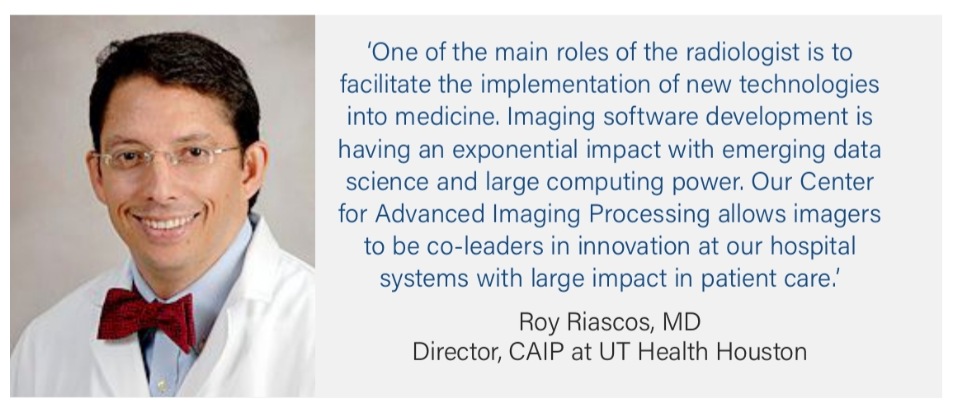The Center for Advanced Imaging Processing (CAIP) is a concept created out of the need to enhance patient care, increase technology availability and improve imaging quality, all through the utilization of innovative technologies. The concept of a postprocessing center held the promise of changing how patient care, radiology technology, business and innovativeness can combine collaboratively to establish advanced image quality and improve standard of care. In addition, the project would have a significant impact on optimizing the quality and quantity of technology deployed, thus serving as a cost-saving effort.
Aims and objectives. The main aim of our initiative was to create a centralized imaging technology center capable of supporting all the advanced imaging post processing needs of our hospital system. The system would need to be available at all sites to handle virtualization of all imaging applications on one platform as a cost-effective solution for the hospital system, training of post-processing experts would bring new technologies to our clinical teams and deployment of a robust upstream solution with digital platforms allowing integration of new technologies into the radiology workflow. Further, it would allow us to standardize workflows for operations, place orders in the EHR, comply with CMS guidelines, bill using proper CPT codes, standardize imaging protocols and educate medical students, residents and fellows in advanced imaging technologies.
Leadership and project management. We established a CAIP development committee, expanding beyond immediate stakeholders to include an IT system architect, IT administrators, CT and MR managers, the CFO of the hospital and an IT VP of the hospital system. A project manager was assigned to follow the project, and subcommittees were created to meet specific aims—protocoling, standardization, technology deployment and integration, testing and vetting. We promoted the CAIP project at the grand rounds of the service lines it would be serving. The ongoing growth of the center includes the creation of a new team focused on expanding the services to new service lines.

Key steps. We executed CAIP in several phases, including an extensive pilot program and a multi-pronged effort to integrate imaging systems from multiple major vendors. Troubleshooting of the vendor neutral platform was developed by members of the hospital IT department during the pilot phase. We developed a scorecard for vetting software to assess the strengths and weaknesses per studies being post-processed by the vendor applications being utilized. We retrained MRI and CT technologists to ensure compliance with CAIP protocols. The remaining phases included implementation, expansion of the center into all 17 hospitals and 52 imaging sites in our hospital system, and integration of the center with a clinical VNA solution that will allow seamless deployment of AI solutions integrated into the clinical workflow.
Positive outcomes. Just to name a few: 1.) Increased utilization of advanced imaging modalities and standardization of the results had a positive impact in patient care with better outcomes. 2.) Reduction in costs of approximately 50% annually in deployment and maintenance of imaging software for the hospital system (approximately $2 million annually). 3.) Increased value of the radiology department in decision making committees at the hospital system level. 4.) Decrease in reporting turnaround times by speeding interpretation times of studies like CT angiograms with vessel tracking. 5.) Deployment of a data platform that is able to deploy smaller vendor software solutions and facilitating integration of AI solutions into the workflow, reducing IT infrastructure and costs.
